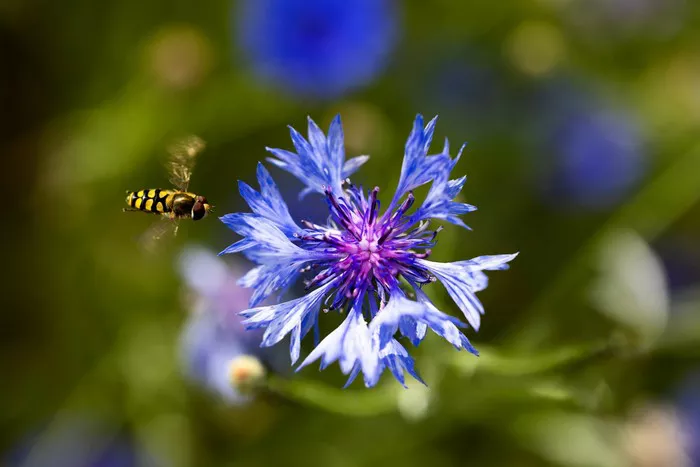In an effort to unravel the intricate decision-making processes of bumblebees when foraging for nectar, researchers have shed light on the insects’ preference for flowers with challenging access to nectar, maximizing immediate benefit to the colony. The findings, recently published in the journal iScience, reveal insights gained through meticulous observations of bumblebees interacting with slippery artificial flowers.
Jonathan Pattrick, the first author of the study, and currently affiliated with the University of Oxford, U.K., explains, “Bumblebees can make decisions ‘on the fly’ about which nectar sources are the most energetically economical. By training bumblebees to visit artificial slippery flowers and using different ‘nectars’ with high, medium, or low sugar content, we found that they could make a trade-off between the energy content of the nectar and how difficult it was to access.”
In essence, bumblebees opt for nectar sources that maximize their immediate sugar collection for the benefit of the colony, rather than focusing on energy efficiency during foraging, in stark contrast to the foraging behavior of honeybees, which prioritize energy efficiency.
Pattrick adds, “Bumblebees have a different lifestyle compared to honeybees; they only store a small amount of nectar in the nest and thus must seize every available foraging opportunity. This distinction between the two species may explain why bumblebees adopt a strategy that offers more immediate benefits to the colony, even if it means harder work, whereas honeybees maintain a more measured approach, potentially extending their working lifespan.”
The identification of the primary criteria used by nectar-foraging bumblebees not only deepens the understanding of their foraging decisions but also has practical applications. It can inform predictions regarding the types of flowers bumblebees are likely to visit, aiding in decisions about which flowers to plant in field margins and offering valuable insights to crop breeders aiming to develop varieties that are more favorable for bumblebees.
At the University of Cambridge, U.K., Pattrick and his team conducted experiments employing vertically and horizontally oriented slippery-surfaced artificial flowers. These experiments aimed to evaluate whether bumblebees could make a trade-off between the ease of handling a particular flower and the concentration of nectar sugar.
With the assistance of a custom computer program, the researchers recorded split-second decision-making by bumblebees as they determined whether to gather high-sugar nectar from slippery flowers, which necessitated hovering and energy expenditure, or lower-sugar nectar from flowers on which they could easily land. In total, 60,000 separate behavioral observations were meticulously captured, enabling the precise estimation of foraging energetics. Previous studies had primarily relied on natural bee behaviors, making it challenging to discern the underlying decision-making processes.
The data unveiled a clear pattern: bumblebees selectively chose either hard-to-handle flowers or those with low sugar concentrations based on what was more energetically advantageous. Their choices aligned with a model in which the critical currency is the rate of energy return, as opposed to energetic efficiency.
The researchers are now contemplating future investigations into whether bumblebees consistently employ this decision-making currency, even when the foraging context undergoes change. Additionally, the remarkable intelligence exhibited by these insects has left the researchers in awe. Pattrick notes, “We find it amazing that, even with a relatively simple brain, bumblebees are able to make such complex energetic decisions.”
In essence, this research not only furthers our comprehension of bumblebee behavior but may also have far-reaching implications for both ecological and agricultural practices, benefiting the preservation of these vital pollinators.


